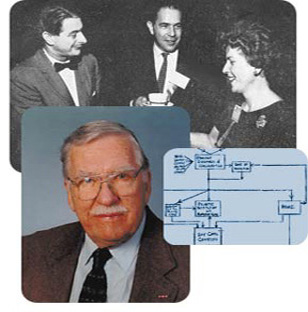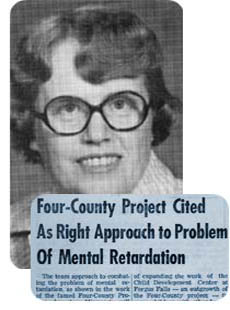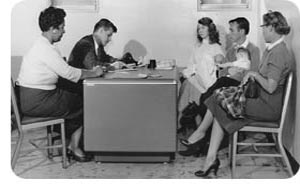Drastic change was needed. Simply expanding the current system was unacceptable.
Two visionaries – John Holahan and Jerry Walsh – came forward with a plan to redesign the way the state cared for people with developmental disabilities. They created a blueprint for a new service system and how it should work.
In May of 1957, the state office of Minnesota Arc opened with Jerry Walsh as its first executive director.

Visionaries Holahan (top middle) and Walsh (bottom) created a blueprint for a new system.
Initiating an aggressive information campaign, Miriam Karlins and others at the Department of Public Welfare published a series of booklets for parents describing its services, guardianship and individual planning options available through county welfare departments.

Miriam Karlins initiated an aggressive parent information campaign.
In 1957, Dr. Eunice Davis headed an in-depth study of 244 children in four Minnesota counties to determine their needs and better estimate the number of people requiring institutionalization.
Of the nearly 250 children originally identified, about half were evaluated and found to have cognitive disabilities, suggesting that misdiagnosis was a potential problem.

An in-depth study by Dr. Eunice Davis found that almost 50% of children with developmental disabilities could have been misdiagnosed.
Action-oriented parents continued pushing for change, often contacting the state Commissioner of Education demanding to know why their children with IQs of 48-49 weren't allowed to attend school.
The Commissioner called upon University of Minnesota Professor Maynard Reynolds for help. Dr. Reynolds knew that special education teachers were in short supply but, unfortunately, state funds were not available for training.

Dr. Maynard Reynolds











